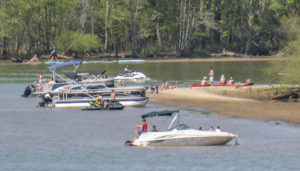 A confirmed case of Naegleria fowleri, commonly known as brain-eating amoeba, has been reported in South Carolina, state health officials said this month. The South Carolina Department of Public Health (SCDPH) has not disclosed the exact location of the case.
A confirmed case of Naegleria fowleri, commonly known as brain-eating amoeba, has been reported in South Carolina, state health officials said this month. The South Carolina Department of Public Health (SCDPH) has not disclosed the exact location of the case.
“The South Carolina Department of Public Health (DPH) was made aware of one case of Naegleria fowleri in our state the week of July 7. Naegleria fowleri is not required to be reported to DPH. The agency does not track infections from the amoeba and does not provide information about or comment on individual cases,” said SCDPH in a press release.
What to Know About the Amoeba
The Naegleria fowleri amoeba thrives in warm freshwater, including lakes, rivers, and hot springs, especially during the summer months. It can also appear in poorly chlorinated tap water, although this is far less common.
Infection occurs when water containing the amoeba enters the body through the nose—typically during swimming, diving, or water sports—and travels to the brain, where it destroys tissue.
Symptoms and Progression
Early symptoms typically appear within one to 12 days of exposure and may include:
-
Sudden fever
-
Severe headache
-
Nausea and vomiting
These symptoms quickly worsen, often leading to seizures, hallucinations, and coma. Most cases result in death within five days of symptom onset.
Public Health Response and Testing
South Carolina does not require public testing for Naegleria fowleri, and health departments are not obligated to issue public notifications when a case is confirmed.
Federal officials continue to emphasize that while the amoeba is present in natural freshwater environments, infections remain extremely rare.
Safety Tips for Freshwater Activities
To reduce the already low risk, the CDC advises:
-
Avoiding jumping or diving into warm freshwater during summer
-
Using nose clips or keeping your head above water in freshwater lakes and rivers
-
Avoiding digging in or stirring up sediment in shallow, warm freshwater areas
Although the infection is rare, it remains one of the most serious waterborne illnesses in the United States. Residents are encouraged to remain cautious, especially during periods of high heat when water temperatures rise.
For more information on Naegleria fowleri, visit CDC.gov/naegleria.


